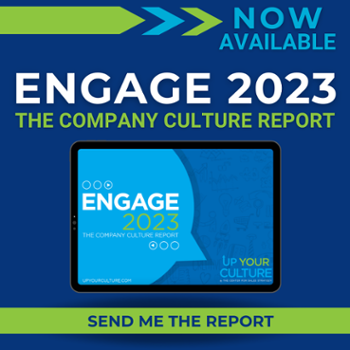
Take a second and imagine how the cultures of well-performing companies are portrayed in film and television. From Mad Men to Succession to The Social Network, what adjectives come to mind? “High pressure,” maybe? “Cutthroat,” “Relentless,” “Uncompromising?” If these movies and shows were to be believed, the most successful organizations are also ones that have the unhealthiest work cultures.
However, while a “take no prisoners” approach might make for great TV, it can hobble organizations here in the real world.
We know from the copious amounts of research being done that a healthy work culture is not something that’s merely “nice to have,” it’s essential to the productivity and longevity of any company.
So, what exactly does a positive company culture look like? Here are some examples (bolstered by undeniable statistics) that demonstrate just how powerful an effect a healthy work culture can have on the overall performance of your organization.
You Find and Retain Top Performers
 Finding and hiring new talent is as essential as it is costly. Turnover is even more expensive. Which is all the more reason to “get it right” every time. After all, 78% of those surveyed felt that the way in which candidates are courted during the hiring process acts as a mirror of the overall organization
Finding and hiring new talent is as essential as it is costly. Turnover is even more expensive. Which is all the more reason to “get it right” every time. After all, 78% of those surveyed felt that the way in which candidates are courted during the hiring process acts as a mirror of the overall organization
And, not surprisingly, a large part of “getting it right” when it comes to hiring is ensuring your new employees enter a welcoming, engaging environment. Studies show that employees who feel engaged are 125% more productive and the companies they work for experience 59% less turnover
(Time. Talent. Energy & State of the American Workplace report).
Another huge piece of the employee engagement puzzle can be found in a company’s identity. If employees can’t articulate or, even worse, aren’t aware of their organization’s purpose, morale can diminish quickly. That’s why 64% of those who know the stated purpose of their company report experiencing higher fulfillment than those who don’t (2016 Workforce Purpose Index).
If your recent hire is greeted by coworkers who are simply “there for the paycheck,” it’s only a matter of time before that becomes their sole motivation as well.
However, when a new employee enters their workplace surrounded by peers who are inspired by their company’s mission and values, then, chances are, they will be inspired in turn.
You Place Your Employees on a Path of Development
As stated above, retaining top performers begins with ensuring your employees are engaged and inspired by the company’s mission and values. One proven way to build on that foundation of engagement is to ensure that each employee is on their own path of development.
It’s no secret that workers crave learning opportunities. 70% of employees desire learning and development in order to perform better in their given role and 59% of millennials say that these opportunities for growth are one of their main criteria when searching for work
(2018 Workplace Distraction Report & 2016 How Millennials Want to Live and Work).
Additionally, employers who engage their workers in active training programs not only receive the benefit of having a more knowledgeable and competent team, but they also see increased profitability.
Again, employees actively want the resources and tools to maximize their performance. When already engaged employees are put on a path for growth? Productivity soars.
You Care About Your Employees' Happiness
Happy employees are good employees. And no, that’s not just nice to say, it’s true! Happy employees are 31% more productive than those who aren’t (Talent Works). However, there are many ways in which this satisfaction can result in increased productivity.
For example, employees who are satisfied are more eager team members. 82% of workers value feedback from their peers and crave more collaboration. And make no mistake, it’s collaborative environments that realize higher rates of productivity more often than their competitive counterparts (State of Employee Engagement).
Along that same line of thought, happy employees are, most likely, recognized on a regular basis for the quality of their work. Companies that have recognition programs in place see turnover plummet by 31% (State of Employee Engagement). On top of that, over 80% of employees prefer to be recognized for successes and achievements than to receive gifts (State of Employee Engagement).
When employees feel valued by their team members and managers alike, the trust that is developed can only be converted into further substantive “wins” for the organization as a whole.
In the End, Unhealthy Company Culture Costs Way Too Much
Every workplace has a culture whether it knows it or not. Going further, it’s probably safe to say that most organizations can’t afford to persist without a stated company culture. When you add up all the costs, from higher turnover to lower productivity, it clearly pays more to engage your employees in an organized way.
So, in short, don’t treat your employees like they do in the movies.
For more on the various benefits of a healthy company culture, check out these blogs.










LEAVE A COMMENT